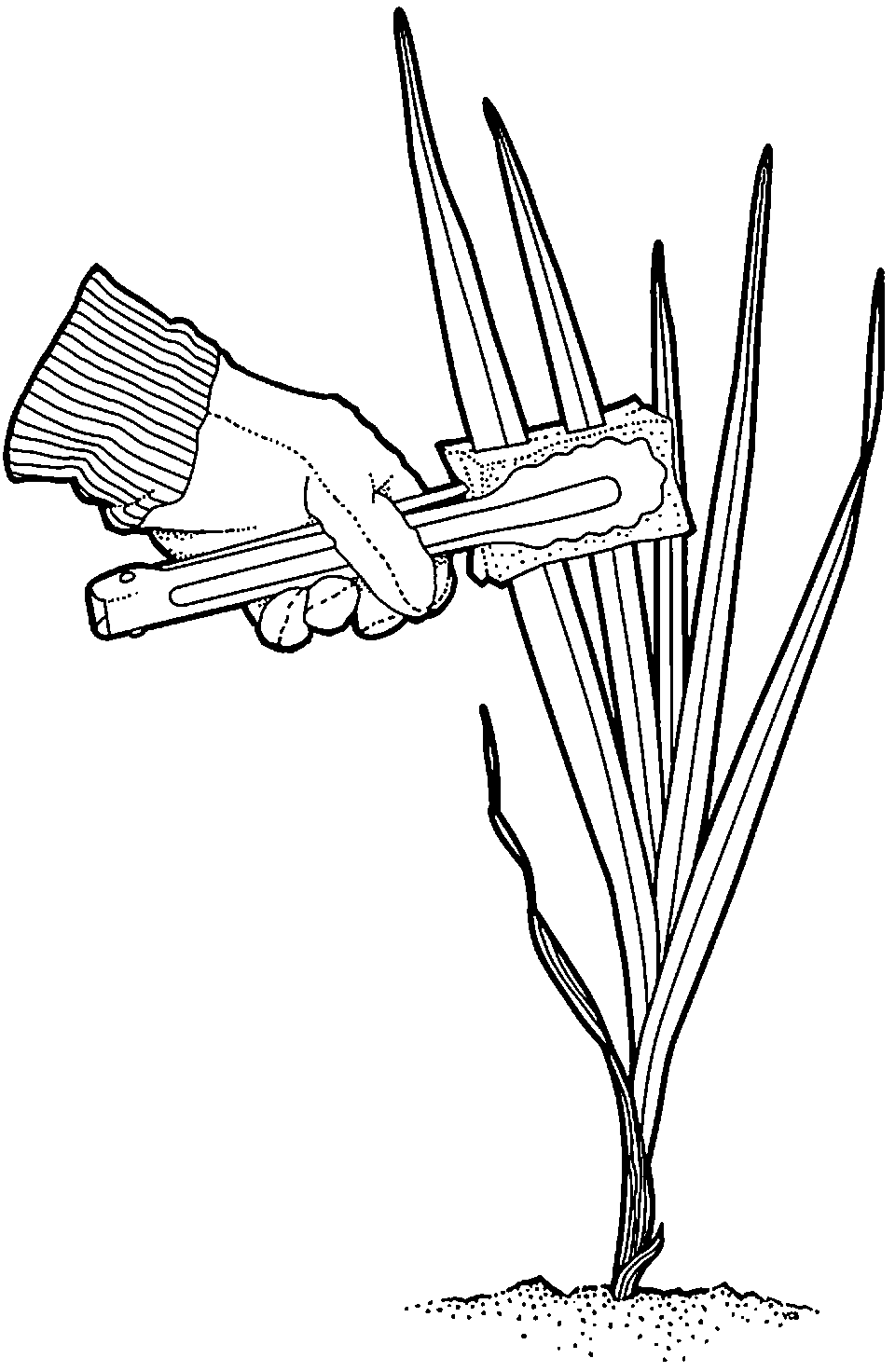Crocosmia x crocosmiiflora
Family: Iridaceae
Type of weed: With underground regrowth structures
Flower colour(s): Orange
Priority Weed Local Priority Weed. (See more weeds of the Local Priority Weed class.)
Flowering Months: January, February, March, December
Description
A perennial hybrid herb.
The leaves are bright green and spear shaped.
Flowers are long, tubular spikes of orange, December to March.
Montbretia has annual leaves and flowers that die down in autumn after producing seeds and reappear in spring. Under the ground Montbretia has long strings of corms which break away when the parent plant is disturbed and begin to shoot. There may be 14 or more of these corms on each plant.
Don’t confuse with…
Montbretia can be confused with native Dianella spp, which frequently grow together. Native Gahnia spp and Stypandra spp can also look similar. The weed Watsonia looks similar but usually has a much broader leaf on a flatter corm.
Dispersal
It spreads vigorously through corm production. Corms are washed downstream. It is dispersed by the movement of soil containing corms; also by seed and in dumped garden waste.
Impact on bushland
Montbretia crowds out all other vegetation. The weight of the mass of corms can cause the collapse of stream banks leading to erosion and sedimentation. It thrives in soils contaminated by stormwater run-off. Montbretia is responsible for serious habitat loss.
Distribution
Lower Blue Mountains, Upper Blue Mountains. Particularly upper Mountains.
Alternative planting
Native plants
- Native Water Ferns (Blechnum spp)
- Native Saw-Sedges (Gahnia spp)
- Dianella spp
Council provides a tool, on its Mountain Landscapes website, to help you choose native alternative plantings. Choose your village, soil, vegetation community and the purpose of your planting, and the tool will give you suggestions.
There are native nurseries in several Blue Mountains villages, including Glenbrook, Lawson and Katoomba. Please also ask at your favourite local nursery.
Control
- Manually remove bulbs, corms and tubers
- Stem swipe
Manual control
Manual removal
Move leaf litter away from base of plant. Dig down next to the stem until the bulb or tuber is reached. Remove plant and carefully bag the bulb or tuber.
Chemical control
Note: Herbicides that may be used for this weed include Glyphosate.
Stem swiping

As always with poisons, see the Herbicide page for information about when to use herbicides — and how to use them effectively and safely.
This method is suitable for herbaceous plants with bulbs, tubers or corms (See Montbretia fact sheet).
Bushcare has produced an instruction page to make your own wiper. Download a PDF with instructions on making and using the wiper.
- Using a weed wiper, start at the base and wipe all the stems and/or leaves with a dilute mix of herbicide. For more information see the Using_Your_Wiper PDF.
- If leaves have soil on them, wipers must be washed regularly.
Take great care when wiping: do not allow the herbicide to touch your skin or to run off into the soil, or to get on a non-target plant. Wear safety glasses to avoid being splashed.
Specific control tips for this weed
- For small young plants (less than 10 cm), digging up is successful if the soil is loose. As plants can have a long string of corms, digging up more established plants will only work if it is followed up repeatedly. Digging should not be used where the loose soil will erode, particularly on creek banks.
- Wipe the leaves with a dilute herbicide mix where there are individual plants, small patches or where montbretia is found with native plants. This is an extremely successful technique when done correctly. The nine critical steps are explained simply in a PDF that you can download and print out: How to Make a Montbretia Weed Wiper. This download also contains instructions for use (with photos).
- Dense patches of montbretia can be sprayed if away from all native plants and from any watercourses or swamps to ensure no risk of water contamination (surface or groundwater).
Herbicide: The techniques using herbicide need to be done when plants are actively growing (leaves are green). The best results are achieved if these are followed up after 6–8 weeks of application.
For key points on these techniques:
Local Priority Weed
Control measures:
- The plant should be fully and continuously suppressed and destroyed.
- Plants under 4 metres in height should be fully and continuously suppressed and destroyed.
- The spread of this plant should be adequately contained to prevent spread impacting on priority assets. Weed notices will only be issued for these weeds under special circumstances.




